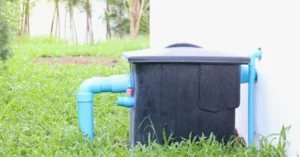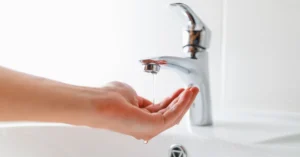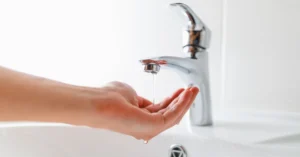Running a restaurant or commercial kitchen in San Diego County comes with many responsibilities. One of the most important (but often overlooked) tasks is grease trap cleaning. If you’re searching for “grease trap cleaning near me,” you’re in the right place. This guide will explain everything San Diego County business owners need to know about grease trap cleaning, maintenance, and local regulations.
What Is a Grease Trap and Why Does It Matter?
A grease trap is a special plumbing device that catches fats, oils, and grease (FOG) before they enter the sewer system. When you wash dishes, clean cooking equipment, or rinse down sinks in your commercial kitchen, grease trap cleaning near me becomes essential because all that greasy water has to go somewhere. Without a grease trap, FOG would flow directly into the sewer pipes.
Here’s why that’s a big problem. When grease cools down, it solidifies. It sticks to the inside of pipes and creates blockages. Over time, these blockages can cause serious backups, flooding, and even damage to the entire sewer system. The EPA’s National Pollutant Discharge Elimination System requires businesses to prevent FOG from entering municipal water systems.
Grease traps work by separating grease from water. Since grease floats, the trap lets grease rise to the top while cleaner water flows out to the sewer. But grease traps fill up over time. That’s why regular grease trap cleaning near me is not just recommended – it’s required by law for most food service businesses.
San Diego County Grease Trap Requirements for Businesses
San Diego County has specific regulations about grease traps for commercial kitchens. If you operate a restaurant, café, food truck commissary, hotel kitchen, school cafeteria, or any business that prepares food, you probably need a grease trap. The exact requirements depend on your business size and type.
Most commercial kitchens need to install grease traps before they can get their health permits. The local health department and sewer authority review your plans to make sure your grease trap is the right size for your kitchen. They look at things like how many sinks you have, what kind of cooking you do, and how much water your business uses.
San Diego County businesses must keep detailed records of grease trap cleaning. This means documenting every time your trap gets cleaned, who did the cleaning, and how much grease was removed. During health inspections, officials will check these records. If you can’t prove you’re maintaining your grease trap properly, you could face fines or even lose your business license.
Different types of grease traps have different cleaning schedules. Small under-sink traps typically need cleaning every week or two. Larger outdoor interceptors might need cleaning monthly or quarterly. The rule of thumb is to clean your trap when it reaches 25% capacity. But don’t wait until it’s full. By then, grease is already starting to escape into the sewer system.
5 Signs Your Business Needs Grease Trap Cleaning Near Me Right Now
How do you know when it’s time to search for grease trap cleaning near me? Here are five warning signs that your grease trap needs attention immediately.
1. Slow Drains Throughout Your Kitchen
When your sinks, floor drains, or dishwashers drain slowly, your grease trap might be full. Grease buildup restricts water flow. You’ll notice water pooling in sinks or taking forever to drain. This slows down your kitchen operations and frustrates your staff. Don’t ignore slow drains. They only get worse and can lead to complete blockages.
2. Bad Smells Coming from Drains
A full grease trap smells terrible. You’ll notice strong, unpleasant odors coming from your drains or near your grease trap. These smells come from decomposing food particles and rancid grease. The smell can spread throughout your kitchen and even into your dining area. Customers definitely notice bad smells, and it can hurt your business reputation.
3. Grease Backup or Overflow
This is the worst-case scenario. When a grease trap gets too full, greasy water backs up into your sinks or onto your kitchen floor. This creates a health hazard and can force you to close your kitchen until the problem is fixed. Grease backups are messy, expensive to clean up, and can damage your floors and equipment.
4. Visible Grease Floating in Your Trap
If you can see your grease trap, check the level regularly. When grease reaches about one-quarter of the trap’s depth, it’s time for cleaning. Don’t wait until the trap is completely full. At 25% capacity, grease starts to escape around the baffles and into your sewer lines.
5. It’s Been Over a Month Since Your Last Cleaning
Even if you don’t see obvious problems, stick to a regular grease trap cleaning near me schedule. Most commercial kitchens need cleaning at least once a month. Busy restaurants might need it more often. Setting up a regular maintenance schedule prevents emergencies and keeps you compliant with regulations.
The Grease Trap Cleaning Process Explained
Professional grease trap cleaning involves several important steps. Understanding the process helps you know what to expect when you hire a service.
First, the technician removes the grease trap cover carefully. They’ll inspect the trap to assess how full it is and check for any damage. Then they use special equipment to remove all the grease, oils, and solid waste from the trap. This isn’t just scooping the top layer. A proper cleaning means completely emptying the trap.
Next, they clean all the internal components. This includes the baffles, which are the walls inside the trap that help separate grease from water. They’ll also clean the inlet and outlet pipes to remove any buildup. After everything is clean, they reassemble the trap and test it to make sure it’s working correctly.
Professional services dispose of the grease properly. They can’t just dump it anywhere. Grease waste must go to approved disposal facilities. Reputable grease trap cleaning near me services handle all the disposal according to environmental regulations. They’ll also give you documentation proving proper disposal, which you need for your records.
The whole process usually takes 30 minutes to an hour, depending on the size of your trap. During this time, you might need to avoid using certain drains in your kitchen. Professional services work quickly to minimize disruption to your business operations.
DIY vs. Professional Grease Trap Cleaning Near Me
Some business owners wonder if they can clean their own grease traps to save money. While it’s technically possible to clean small under-sink traps yourself, it’s not recommended for several reasons.
Grease trap cleaning is messy and unpleasant work. The smell alone is enough to make most people regret trying it themselves. You also need special equipment to do it properly. Plus, you’re responsible for disposing of the grease legally. If you dump grease improperly, you could face serious fines.
Professional grease trap cleaning near me services have the right tools, experience, and disposal methods. They work faster and more efficiently than attempting DIY cleaning. They also know how to spot problems like damaged baffles, corrosion, or undersized traps that need replacement. Many health departments require professional cleaning with proper documentation.
The cost of professional grease trap cleaning is a regular business expense, just like pest control or equipment maintenance. It’s much cheaper than dealing with backups, health violations, or emergency repairs. Think of it as insurance for your plumbing system and business license.
How to Choose the Best Grease Trap Cleaning Service in San Diego County
When searching for grease trap cleaning near me, you want a reliable, professional service. Here’s what to look for in a grease trap cleaning company.
First, make sure they’re licensed and insured. San Diego County requires grease trap cleaning companies to have proper licenses. Insurance protects you if something goes wrong during cleaning. Always ask to see proof of licensing and insurance before hiring any service.
Look for companies that offer regular maintenance schedules. The best services will set up automatic appointments so you never forget cleaning. They’ll send reminders and show up on schedule without you having to remember to call them every month. This consistent service keeps you compliant and prevents emergencies.
Ask about their disposal methods. Reputable companies should explain where they take the grease and provide documentation. This documentation is important for your records and proves you’re following environmental regulations.
Check reviews and references from other San Diego County businesses. Restaurant owners, hotel managers, and other commercial kitchen operators can tell you about their experiences. Good grease trap cleaning near me services have strong local reputations and satisfied customers.
Consider companies that offer additional services. Some grease trap cleaning companies also handle drain cleaning, emergency plumbing, and grease trap repairs or replacements. Having one trusted company for all your commercial plumbing needs simplifies your life.
Preventing Grease Trap Problems Between Cleanings
Regular professional cleaning is essential, but you can also take steps to keep your grease trap working better between cleanings. Good kitchen practices reduce grease buildup and extend the time between services.
Train your staff on proper grease disposal. They should never pour cooking oil or grease down the drain. Use grease collection containers for used cooking oil. These containers get picked up by specialized services that recycle the oil. This keeps large amounts of grease out of your trap.
Scrape plates and cookware before washing. Food scraps and heavy grease should go in the trash, not down the drain. Install strainers in all your sinks to catch food particles. Empty these strainers regularly into the garbage.
Use the right cleaning products. Never use chemical drain cleaners or degreasers that claim to dissolve grease. These products just push grease further into your pipes where it causes bigger problems. They can also kill the beneficial bacteria in your grease trap that help break down organic matter.
Monitor your trap regularly. Check it weekly to see how full it’s getting. If you notice it filling up faster than usual, you might need more frequent cleaning. Changes in your menu, increased business volume, or new equipment can all affect how quickly your trap fills.
Keep good records of all maintenance. Document your cleaning schedule, who performed the service, and any issues they found. These records prove compliance during health inspections and help you track patterns over time.
The Real Cost of Skipping Grease Trap Cleaning
Some business owners try to save money by delaying grease trap cleaning. This is a huge mistake. The costs of skipping maintenance far exceed the cost of regular cleaning.
Health department fines can be severe. If inspectors find you haven’t maintained your grease trap properly, you could face fines of hundreds or even thousands of dollars. Repeat violations can result in losing your health permit, which means shutting down your business.
Emergency repairs cost much more than preventive maintenance. When a neglected grease trap causes a backup, you’re looking at emergency plumbing services, often at premium rates. You might need to close your kitchen while repairs are done, losing revenue during that time.
Damage to your plumbing system adds up quickly. Grease buildup in your pipes can require extensive cleaning or even pipe replacement. These repairs can cost thousands of dollars. Regular grease trap cleaning near me prevents this expensive damage.
Your business reputation suffers when grease problems cause visible issues. Bad smells, backed-up sinks, or having to close temporarily all hurt your reputation. Customers remember negative experiences and share them online. The cost of lost business is hard to calculate but very real.
Get Professional Grease Trap Cleaning in San Diego County Today
Grease trap cleaning near me isn’t something to put off or handle carelessly. For San Diego County business owners, proper grease trap maintenance protects your business, keeps you compliant with regulations, and prevents costly emergencies. Whether you run a small café or a large restaurant, regular professional cleaning is essential.
Don’t wait until you have a backup or fail a health inspection. Set up a regular maintenance schedule with a trusted professional service. The small investment in regular cleaning saves you from much bigger problems down the road.
Solid Plumbing & Drains offers expert commercial plumbing services throughout San Diego County. Their experienced team understands the unique needs of food service businesses. They provide reliable grease trap cleaning on your schedule, complete with proper documentation and disposal.
Need help with your grease trap today? Whether you’re setting up a new commercial kitchen, dealing with an emergency backup, or just looking for regular maintenance, Solid Plumbing & Drains has you covered. Their licensed technicians work quickly and professionally to keep your business running smoothly.
Contact Solid Plumbing & Drains at 858-331-1258 for professional grease trap cleaning near me in San Diego County. They’ll assess your needs, set up a maintenance schedule, and ensure you stay compliant with all local regulations. Don’t let grease trap problems hurt your business. Call today and get the reliable service your commercial kitchen deserves.



